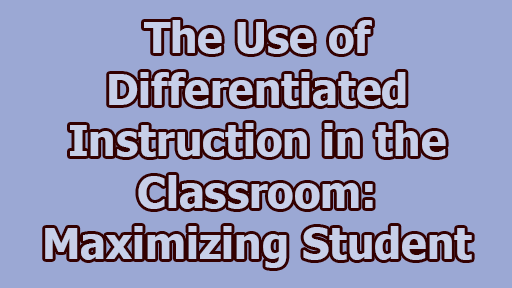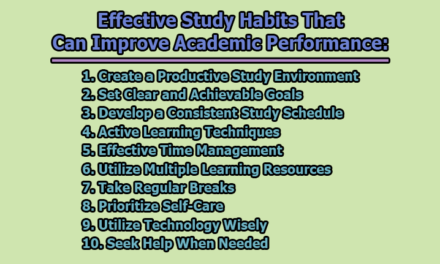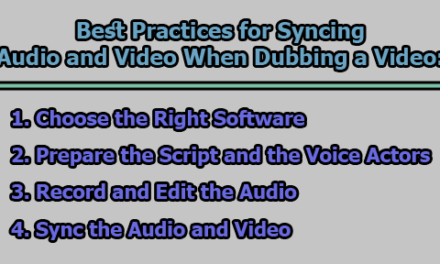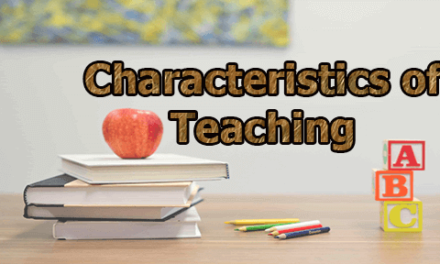The Use of Differentiated Instruction in the Classroom: Maximizing Student Success
In today’s diverse and dynamic educational landscape, teachers are faced with the complex task of catering to the unique needs, abilities, and learning styles of each student in their classroom. One-size-fits-all teaching methods often fall short in engaging and nurturing the potential of every learner. This is where differentiated instruction emerges as a beacon of hope. Differentiated instruction, a pedagogical approach that tailors teaching to individual learners, holds the key to unlocking the full potential of students, fostering inclusivity, and creating a dynamic and engaging learning environment (Tomlinson & Allan, 2000). In the rest of this article, we will explore the use of differentiated instruction in the classroom: maximizing student success.
Defining Differentiated Instruction:
Differentiated instruction is an educational philosophy and teaching approach that recognizes the diversity of students within a classroom and seeks to accommodate these differences by adjusting instruction, content, and assessment (Tomlinson, 2001). It is a student-centered approach that acknowledges that every learner is unique, and therefore, their educational experiences should be tailored to suit their individual needs and abilities (Tomlinson, 2014).
At its core, differentiated instruction aims to address the following key principles:
1. Recognition of Student Diversity: Differentiated instruction begins with the acknowledgment that students come to the classroom with varying prior knowledge, skills, and learning styles. It respects these differences and leverages them to enhance learning (Tomlinson & Allan, 2000).
2. Flexible Curriculum: A differentiated curriculum allows for variations in content, process, and product to meet students where they are. This means that teachers must be flexible and adaptable in their teaching methods and resources (Tomlinson, 2003).
3. Assessment for Learning: Assessment in differentiated instruction is not just about evaluating students’ performance; it is a tool for understanding their progress and needs. Continuous assessment helps teachers adjust instruction accordingly (Wormeli, 2006).
4. High Expectations: Differentiated instruction doesn’t mean lowering academic standards. On the contrary, it sets high expectations for all students, challenging them to reach their full potential (Tomlinson, 2017).
5. Inclusive Learning Environment: This approach promotes inclusivity by accommodating students with diverse backgrounds, abilities, and learning needs (Tomlinson & Imbeau, 2010).
Differentiated Instruction Strategies:
To implement differentiated instruction effectively, educators can utilize various strategies that address the diverse needs of their students. Some key strategies include:
1. Tiered Assignments: Teachers provide different levels of tasks or assignments to cater to students’ readiness levels. For example, in a history class, some students might read primary sources, while others read simplified summaries (Tomlinson, 1999).
2. Flexible Grouping: Students are grouped and regrouped based on their current needs and abilities. This promotes peer learning and allows teachers to address specific learning gaps (Tomlinson, 2012).
3. Varied Instructional Materials: Offering a variety of learning resources such as textbooks, multimedia, and hands-on materials ensures that students with different learning styles are engaged (Tomlinson, 2004).
4. Choice Boards: These boards present students with a range of tasks related to a topic, allowing them to choose activities that align with their interests and learning preferences (Tomlinson, 2017).
5. Scaffolded Instruction: Teachers provide the necessary support for struggling students while allowing advanced learners to progress independently (Tomlinson & Moon, 2013).
6. Formative Assessment: Regular assessments, quizzes, and feedback are used to gauge student understanding and adjust instruction accordingly (Tomlinson, 2014).
Benefits of Differentiated Instruction:
The adoption of differentiated instruction yields a multitude of benefits for both educators and students alike:
1. Improved Student Engagement: Tailoring instruction to individual needs keeps students actively engaged in the learning process, reducing disinterest and classroom disruptions (Tomlinson, 2003).
2. Enhanced Learning Outcomes: When instruction is aligned with students’ readiness levels and interests, they are more likely to grasp and retain information effectively (Tomlinson, 2017).
3. Promotes Critical Thinking: Differentiated instruction encourages students to think critically, solve problems, and explore concepts at a deeper level (Tomlinson, 2001).
4. Boosts Self-Esteem: Success at an individualized pace bolsters students’ confidence and self-esteem, making them more enthusiastic about learning (Tomlinson, 2014).
5. Inclusivity and Equity: It ensures that all students, regardless of their learning differences, have equal access to quality education (Tomlinson & Moon, 2013).
6. Supports Diverse Learning Styles: Differentiated instruction recognizes and supports various learning styles, catering to visual, auditory, kinesthetic, and other types of learners (Tomlinson, 2004).
Challenges and Considerations:
While differentiated instruction offers numerous advantages, it’s not without its challenges and considerations:
1. Time-Consuming: Planning and implementing differentiated instruction can be time-consuming for educators, especially when managing diverse classrooms (Tomlinson, 2003).
2. Resource Intensive: It may require additional teaching materials, technology, and support to effectively cater to the needs of all students (Tomlinson, 2004).
3. Assessment Complexity: Evaluating students’ progress in a differentiated classroom can be challenging due to the varying tasks and pacing (Wormeli, 2006).
4. Resistance to Change: Some educators may resist adopting this approach due to its departure from traditional teaching methods (Tomlinson, 2017).
5. Professional Development: Teachers need ongoing training and support to effectively implement differentiated instruction in their classrooms (Tomlinson & Imbeau, 2010).
Practical Implementation of Differentiated Instruction:
Now that we have explored the principles, strategies, benefits, and challenges of differentiated instruction, let’s delve into how educators can practically implement this approach in their classrooms:
1. Know Your Students: The first step in differentiation is understanding your students’ diverse needs and abilities. Regular assessment and communication with students can provide valuable insights (Tomlinson, 2014).
2. Set Clear Objectives: Clearly define learning objectives for each lesson or unit, and consider how they align with your students’ varied readiness levels (Tomlinson, 1999).
3. Differentiated Content: Offer a range of materials, resources, and texts that cater to different readiness levels. This can include advanced readings, simplified texts, or multimedia resources (Tomlinson, 2001).
4. Flexible Grouping: Organize students into groups based on their needs and abilities, and be prepared to change these groups as needed. Collaborative learning can be particularly effective (Tomlinson & Moon, 2013).
5. Varied Instructional Strategies: Use a mix of teaching methods such as lectures, discussions, hands-on activities, and multimedia presentations to engage different learning styles (Tomlinson, 2004).
6. Scaffolded Support: Provide additional support and guidance for struggling students while allowing advanced learners to explore topics independently (Tomlinson & Moon, 2013).
7. Choice and Autonomy: Offer students choices in assignments, projects, or topics of interest, empowering them to take ownership of their learning (Tomlinson, 2017).
8. Continuous Assessment: Regularly assess student understanding through formative assessments, and use this data to adjust your teaching approach (Wormeli, 2006).
9. Feedback and Reflection: Provide timely and constructive feedback, and encourage students to reflect on their learning journey (Tomlinson, 2014).
In conclusion, in a world where diversity is notable and education is a cornerstone of personal and societal development, differentiated instruction stands as an educational beacon. It is not merely a teaching technique; it is a philosophy that recognizes the uniqueness of each student and seeks to nurture their potential (Tomlinson & Allan, 2000).
By embracing differentiated instruction, educators can create dynamic and inclusive classrooms where every student has the opportunity to succeed. While it may present challenges, the benefits it offers in terms of improved engagement, enhanced learning outcomes, and equity make it a compelling approach for the modern educator.
As we move forward in the ever-evolving landscape of education, let us remember that the true power of differentiated instruction lies not just in its ability to adapt to diverse needs but in its capacity to empower every student to shine brightly on their individual educational journey.
References:
- Tomlinson, C. A. (1999). The differentiated classroom: Responding to the needs of all learners. ASCD.
- Tomlinson, C. A. (2001). How to differentiate instruction in mixed-ability classrooms. ASCD.
- Tomlinson, C. A. (2003). Fulfilling the promise of the differentiated classroom: Strategies and tools for responsive teaching. ASCD.
- Tomlinson, C. A. (2014). The differentiated classroom: Responding to the needs of all learners, 2nd edition. ASCD.
- Tomlinson, C. A., & Allan, S. D. (2000). Leadership for differentiating schools & classrooms. ASCD.
- Tomlinson, C. A., & Imbeau, M. B. (2010). Leading and managing a differentiated classroom. ASCD.
- Tomlinson, C. A., & Moon, T. R. (2013). Assessment and student success in a differentiated classroom. ASCD.
- Tomlinson, C. A. (2017). How to differentiate instruction in academically diverse classrooms, 3rd edition. ASCD.
- Wormeli, R. (2006). Fair isn’t always equal: Assessing and grading in the differentiated classroom. Stenhouse Publishers.

Library Lecturer at Nurul Amin Degree College










